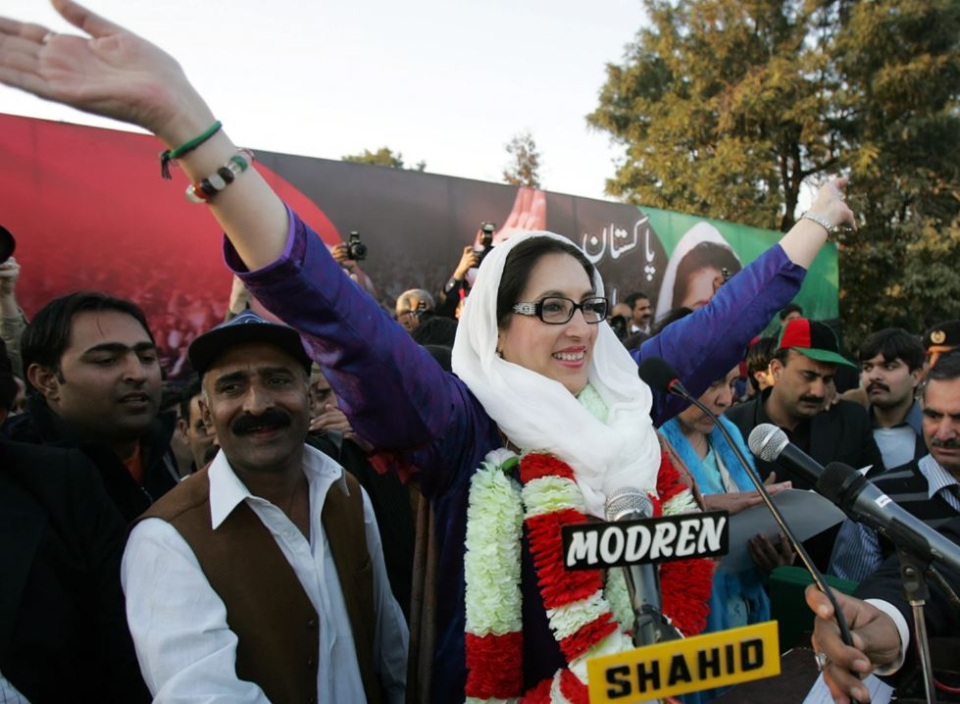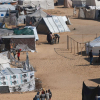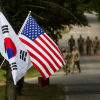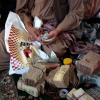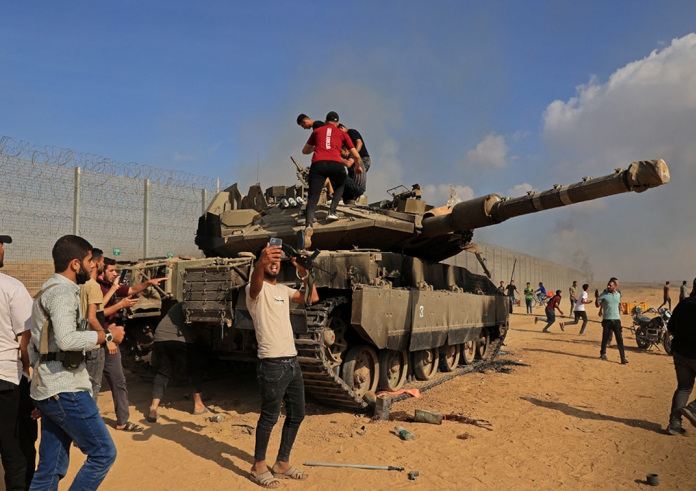By: Abdul Sayed
The changing narratives and operations of al-Qaeda and its Pakistani ally, Tehreek-e-Taliban Pakistan (TTP), in recent years indicate that the anti-state jihadist war in Pakistan will not end with a U.S. withdrawal from Afghanistan in 2021 or thereafter (The News, March 1). Recent speeches by the TTP emir, Mufti Noor Wali Mehsud, to a coalition of senior TTP commanders on the future goals of the war in Pakistan is not the only piece of evidence signifying that this war will continue (Umar Media, August 18, 2020; Umar Media, December 15, 2020). Rather, history also shows this war still has a long way to go.
Pakistani Islamists are widely believed to have originally supported al-Qaeda’s war against the Pakistani state due to post-9/11 changes in Pakistan’s foreign policy, which supported the U.S.-led invasion of Afghanistan that expelled the Taliban regime from Kabul. However, the anti-state jihadist war in Pakistan is deeply rooted in the pre-9/11 complexities of Pakistani politics, which culminated in Islamists enabling al-Qaeda operations within Pakistan immediately after 9/11. The war against the Pakistani government is so deeply entrenched that it will remain a challenge for the country even if the widely accepted jihad against the U.S. “infidel occupier” in Afghanistan and its allies, including Pakistan, is no longer a factor.
An overlooked illustration of the deep roots of the Islamist war in Pakistan comes from the assassination of Benazir Bhutto, whose thirteenth anniversary was last month. Bhutto’s assassination provides indications about how jihadist violence will continue to be a feature in Pakistan even when the country’s support to the U.S. in Afghanistan no longer motivates al-Qaeda and TTP militancy. Benazir was the leader of the social-democratic party, the Pakistan People’s Party (PPP), when she was assassinated on December 27, 2007 in Rawalpindi, which neighbors the Pakistani capital, Islamabad. She had only returned to Pakistan in October 2007 from self-imposed exile in Britain and Dubai in the hope of becoming Pakistan’s prime minister for the third time. A leading figure of Pakistani politics’ secular and liberal camp, she was the first major al-Qaeda and TTP target in Pakistan, but hardly the last. [1]
Her high-profile daylight assassination remained controversial for years and led to a blame game between Pakistani politicians, but new evidence related to her murder was released in 2017 in a book on the matter by current TTP emir, Noor Wali Mehsud, which solved several mysteries (Dawn, December 29, 2017). [2] The official final investigation results involving Scotland Yard and a UN team concluded that Osama bin Laden commissioned Benazir’s assassination to the TTP founding emir Baitullah Mehsud through Abu Ubaydah al-Masri (the “Egyptian”), who commanded al-Qaeda operations in Pakistan (Dawn, December 28, 2018). The investigation identified different tiers of operators from the chief planner Ibad-ur-Rehman (a.k.a Farooq Chattan) to suicide bomber assassins, to local facilitators. Mehsud’s book added to this understanding by showing that Baitullah Mehsud and TTP’s leadership purposely denied their involvement in Benazir’s assassination, despite providing planning and operational details not only for the assassination, but also for the previous assassination attempt in Larkana, Sindh Province in October 2007, which killed dozens of her party members.
Bhutto’s Early Battles against Islamism, al-Qaeda, and the Military Establishment
Pro-Islamist Pakistani army general, Zia-ul-Haq, ousted Zulfiqar Ali Bhutto (ZAB), father of Benazir, through a military coup resulting in ZAB’s controversial death sentence in 1979 (Dawn, April 4, 2019). [3] Zia soon became a hero to Pakistani Islamists for the advancement of Islamization processes and central role in supporting the Afghan jihad against Soviet troops in Afghanistan. [4] This brought Zia closer to Islamist political parties, particularly to Jamaat Islami (JI), which held a longstanding ideological and political rival of the socialist ZAB, whose government suppressed their organization in the 1970s. [5] Benazir, therefore, inherited her father’s political legacy, including his conflict with Pakistani Islamists and his fight against the military establishment’s dominance over democratically elected governments.
Benazir became the first female prime minister of Pakistan and the first woman to become prime minister of a Muslim majority country after defeating a powerful alliance of Islamist and mainstream political parties in 1988 that were allegedly backed by pro-Zia army generals (Dawn, October 30, 2012). The Islamist parties opposed her both because they considered a female head of state to be against Islamic law and because she was a strong voice against their interpretations of Islam. The Arab jihadists in Pakistan also feared Benazir would obstruct their goals to further Islamize Pakistan and Afghanistan. Bin Laden, through his trusted associates among Pakistani Islamists, financed the 1989 no-confidence motion against Benazir in parliament, which was brought forward by the anti-Benazir political alliance (Dawn, December 24, 2017; YouTube, September 18, 2012). Subsequent evidence suggested a senior officer of the Pakistani intelligence agency, Inter-Services Intelligence (ISI), who at the time served as ISI’s Islamabad station chief, covertly played a central role in this no-confidence motion. This remains a major scandal in Pakistan’s political history, known as Operation Midnight Jackal, which resulted in the termination of the involved officer (Dawn, November 27, 2016; YouTube, September 27, 2009).
During Benazir’s second term as prime minister came in 1993-1996 (her first being 1988-1990), during which she arrested and extradited dozens of Arab jihadists to their home countries. This policy resulted in the Arab jihadists receiving life imprisonment and death penalties. [6] The remaining Arab jihadists feared that they too would be arrested and fled to Afghanistan, Bosnia, Central Asia, and Sudan. [7] They included senior al-Qaeda cadres, who became al-Qaeda’s post-9/11 leaders in Afghanistan and Pakistan, including, for example, Abu Ubaydah al-Masri and Mustafa Abu Yazid, the latter of whom would go on to claimed that Benazir’s assassination was revenge for her policies against jihadists (Asia Times, December 27, 2007). [8]
In addition, as a result of these extraditions, an al-Qaeda-linked Pakistani jihadist, Ramzi Yousef, organized two attempts to assassinate Benazir, but she survived both times (The News, September 7, 2017). Ramzi also masterminded the 1993 World Trade Center bombing and was the nephew of the 9/11 mastermind, Khalid Shaikh Muhammad. Benazir’s government finally arrested Ramzi in February 1995 in Islamabad and quickly extradited him to the United States, where he has since been imprisoned for life. He remains an al-Qaeda hero praised by bin Laden and Aymen al-Zawahiri. [9]
Besides these arrests and extraditions, the Benazir government also implemented controversial laws in 1994 in the Dir division of Khyber Pakhtunkhwa province of Pakistan that agitated local Islamists. [10] A radical JI splinter group, Tehreek Nifaz-i-Shariat-i-Muhammadi (TNSM), protested these laws through a violent uprising that took control of government buildings and the Saidu Sharif airport (Dawn, November 3, 2007; Dawn, July 12, 2019). [11] This resulted in a Taliban-style movement emerging in the Dir, Bajaur, and Swat areas of Khyber Pakhtunkhwa led by TNSM emir Sufi Muhammad. [12] His movement coincided with Mullah Umar’s rise in Afghanistan, but both movements remained separate and the Benazir government killed and arrested hundreds of TNSM members. [13]
TNSM’s two senior-most members after Sufi Muhammad, his son-in-law and successor Maulana Fazlullah and Mulawi Faqir Muhammad, became key TTP figures after 2007. The latter became the founding deputy head of TTP and the former, Fazlullah, became its central emir in 2013. [14] Faqir Muhammad was the TTP Bajaur chapter emir. Post-9/11, he hosted al-Qaeda leaders in Bajaur, including Aymen al-Zawahiri and Abu Ubaydah al-Masri. [15] Meanwhile, the head planner of Benazir’s assassination, Farooq Chattan, hailed from Swat, and was affiliated with the TTP’s Maulana Fazlullah-led “Swati Taliban” (Dawn, October 30, 2012).
Benazir’s Second-Term Battles
Benazir’s ascension to power for a second term in 1993 resulted in the formation of another radical JI splinter group, Tehreek Islami Pakistan (TIP), which emerged from JI’s intellectual class in Islamabad and other Pakistani urban centers (The Friday Times, June 26, 2011). TIP’s hardliners separated from JI in 1994 due to the policies of JI head Qazi Hussain Ahmad. Some of the hardliners even accused him of pursuing a failed strategy that allowed Benazir to become prime minister for a second time one year earlier. [16] Amira Ihsan, a senior TIP member who represented JI in the Pakistani parliament in 1988, now led this charge against JI. A brother of Ihsan, Colonel Muhammad Hamid, was later part of a failed military coup against Benazir in 1995, which was planned by senior army generals and a pro-al-Qaeda veteran Afghan jihadist commander, Qari Saifullah Akhtar (The Friday Times, June 26, 2011).
One of Amira Ihsan’s sons, Raja Muhammad Salman (a.k.a Ustad Ahmad Farooq), also played the primary role in establishing al-Qaeda in Pakistan after 9/11. [17] Ustad Ahmad Farooq became senior advisor to Mustafa Abu Yazid and later led al-Qaeda in the Indian Subcontinent (AQIS) until he was killed in a US drone strike in 2015. [18] Benazir suspected Akhtar of plotting her assassination weeks before her assassination took place (Geo TV, January 10, 2007). Akhtar was consequently arrested for her assassination, but he was released in 2008. He later joined Ustad Ahmad Farooq’s al-Qaeda fighters in Waziristan until his death in January 2017 in a U.S. and Afghan joint operation in Ghazni province, Afghanistan. [19]
Besides these enemies, Benazir also faced severe opposition from the anti-Shia Sunni Deobandi sectarian group, Sipahi Sahaba Pakistan (SSP) for her Shia roots. [20] SSP excommunicates all Shia Muslims, demands a totalitarian Sunni state, and has been a major contributor to lethal Shia-Sunni sectarian violence in Pakistan (see Terrorism Monitor, May 5, 2005). SSP’s founder, Haq Nawaz Jhangvi, who was known for his firebrand oratory, declared it a religious duty to oust Benazir from power for being Shia. [21] SSP members also facilitated Ramzi Yousef’s two assassination attempts on Benazir in the 1990s and its underground splinter, Lashkar-e-Jhangvi (LeJ), which was named after Haq Nawaz Jhangvi, has remained a brutal face of terrorism in Pakistan (The News, September 7, 2017). [22]
In 1990, Jhangvi was assassinated by his Shia sectarian opponents, who were arrested immediately after the murder. His followers considered his killing to be part of a larger conspiracy organized by influential Pakistani Shia politicians and even Iran. Jhangvi’s killing resulted in massive violence in his native district of Jhang and elsewhere in Punjab, which birthed LeJ in 1995. [23] In particular, LeJ also became the main implementer of al-Qaeda and TTP attacks in Pakistan after 9/11. [24] Mustafa Abu Yazid, for example, mentioned that LeJ assisted al-Qaeda in assassinating Benazir when later claiming responsibility for the act (Asia Times, December 27, 2007).
The Red Mosque Operation and Relationship with Musharraf
Although Benazir remained in exile after 9/11, she consistently informed the world about the Islamist and jihadist threat in Pakistan (Asia Times, November 3, 2004). She was also critical of the post-9/11 policies of Pakistani army generals, particularly Pervez Musharraf, specifically their attempts at countering al-Qaeda and its allies, such as TTP, in Pakistan. Her long experience confronting al-Qaeda, Islamists, and rogue elements of Pakistan’s military establishment gave her perspective on how to counter the post-9/11 challenge of Islamist militancy in Pakistan.
Although Benazir supported Musharraf’s controversial military operation against a pro-al-Qaeda Islamist leader, Abdul Rasheed Ghazi, in Islamabad in July 2007, which killed Ghazi and dozens of followers in the Red Mosque, she doubted the sincerity behind Musharraf and his allies’ post-9/11 counterterrorism policies (Dawn, Jul 16, 2007). Other Pakistani political leaders, including Musharraf’s allies, meanwhile tried to disassociate themselves from the Red Mosque operation due to fears of severe repercussions from the public and reprisal attacks from jihadists and Islamist militants (The Express Tribune, April 26, 2013). The Red Mosque incident was the boiling point for al-Qaeda and its post-9/11 allied Pakistani jihadists, who quickly declared an open war against the state in revenge for the operation. [25]
The Remaining al-Qaeda and TTP Threat in Pakistan
The sequences of confrontations between Islamists, al-Qaeda, the military establishment, and Benazir from her entry into politics in 1988 until the July 2007 Red Mosque incident and her assassination in December 2007 offer a detailed picture of Pakistani political complexities, which paved the way for post-9/11 pro-al-Qaeda Islamists, including the TTP, to conduct an anti-state jihadist war in Pakistan. The hardliners from the anti-Benazir Islamist groups of the 1990s defected to al-Qaeda and the TTP and played a part in her assassination. Powerful elements of the military establishment who tried to stop Benazir by allegedly supporting Islamist groups who also were considered suspects for their roles in al-Qaeda and the TTP’s assassination of Benazir (UN, April 15, 2010; BBC, December 27, 2017).
Although al-Qaeda’s and the TTP’s official narrative of fighting against the Pakistani state began with their criticism of the Red Mosque incident in 2007 and Pakistan’s support of the U.S. invasion of Afghanistan after 9/11, they are now focused on the long-term goals of replacing democracy with Sharia and making Pakistan a totalitarian Sunni state. [26] These were the goals for which their predecessors struggled, including JI, TIP, TNSM, SSP and LeJ. This suggests that the anti-state jihadist war will not end with the U.S. withdrawal from Afghanistan as it is deeply rooted in the complexities of Pakistani politics, which still persist into the future.
Notes:
[1] Syed Salim Shahzad, Inside al-Qaeda and Taliban: Beyond Bin Laden and 9/11, (Pluto Press: London, UK, 2011), pp.169
[2] See for details, Mufti Noor Wali Mehsud, Inqilab-i-Mehsud, (Mehsuds Revolution) [In Urdu], (Al-Shahab Publishers: Paktika, 2017).
[3] See, for example, Chris Sands and Fazelminallah Qazizai, Night Letters, (Hurst Publishers: London, 2019)
[4] In 2011, during the time of the PPP government, the murder case was reopened by the Supreme Court, which declared it a political murder. ZAB was suspected in a murder case of his political opponent, so when Zia came to power, he probed that case against ZAB and handed down the death penalty to ZAB, even though political opponents of ZAB declared it an unjust decision.
[5] Sands and Qazizai, 2019.
[6] Anne Stenersen, Al-Qaida in Afghanistan (Cambridge University Press: United Kingdom, 2017). pp.48
[7] Ibid.
[8] Shahzad, 2011, pp.168-9.
[9] Rabi al-Islami [In Arabic: Islamic Spring], Second Part, As-Sahab Central, 2015. Osama Bin Laden interview with ABC John Miller, ABC News, May 1998. For details on Ramzi Yousef, see, Yosri Fouda and Nick Fielding, Masterminds of Terror: The Truth Behind the Most Devastating Terrorist Attack the World Has Ever Seen, (Arcade Publishing: New York, 2004).
[10] Mona Kanwal Sheikh, Guardians of God: Inside the Religious Mind of the Pakistani Taliban, (Oxford University Press: Oxford, 2016), pp.80-82.
[11] Ibid
[12] Ibid
[13] Ibid
[14] Mehsud, 2017, pp. 522
[18] Ustad Ahmad Farooq, “Shaikh Saeed (Mustafa Abu Yazid)”, Hitteen, Issue 9, pp. 117-138
[19] It is mentioned in the Urdu magazine of al-Qaeda by a close aide of Ahmad Farooq, see for details; Moeenuddin Shami, “With Ustad Farooq: Part 17th“, Nawai Afghan Jihad [in Urdu], Vol. 13, Issue 4, pp. 65-66.
[20] See for details, the autobiography of Haq Nawaz Jhangvi successor; Zia ur Rehman Farooqi, Phir Wahe Qaid o Qafas (Again the same imprisonment) [In Urdu], (Farooqi Academy: Faisalabad, 1997)
[21] Ibid
[22] Mohammad Amir Rana, Gateway to Terrorism, (New Millennium: London, UK, 2003)
[23] See for details, the autobiography of SSP leader; Azam Tariq, Toot gae zanjeer (The broken chains) [In Urdu], (Ishat-ul-Maarif: Faisalabad, Sep 2004) 6th:Ed.
[24] Mujahid Hussain, Punjabi Taliban: Driving Extremism in Pakistan, (Pentagon Press: New Delhi, India, 2012)
[25] See for details, Shahzad, 2011.
[26] See the detailed essay of the al-Qaeda recruitment and propaganda head in Pakistan, who played a central role in the establishment of the post-9/11 anti-state jihadist war in Pakistan: Ustad Ahmad Farooq, Pakistan mi jihad jari rihna chaheay [Urdu: Jihad should continue in Pakistan], Hitteen Publications, Oct 2016.

